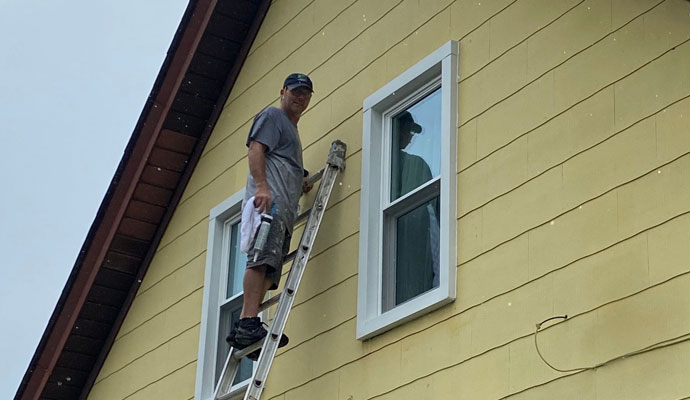How To Choose The Right Replacement Window

Choosing a replacement window is more than an aesthetic judgment. The right choice of glass, frame and design can have a big influence on future heating and cooling bills, so the homeowner should take all these factors into consideration when visiting the window company. Good windows will be the homeowner’s friend for years to come, keeping fuel bills low as well as improving the look of the place.
There was a time when windows were just windows. They were designed mainly for their looks, and most shoppers did not look any further when making their decision. Now purchasers are more demanding, requiring adequate insulation as well as a nice look and a good window installation.
With this in mind, the modern window company has come out with new materials offering a greater range of options to homeowners. The possibilities begin with the frame, a factor once almost ignored. As your window insulation company representative can tell you, the insulation value of a replacement window frame can be surprisingly important in maintaining the home’s temperature.
- Wood- Traditional wooden window frames still have the best insulation value of all the possibilities, but they also bring the disadvantages of an organic material. Organic materials are appetizing to insects and microorganisms, especially in warm, humid climates.
- Vinyl- As an inorganic substance, vinyl is inedible to bugs and microorganisms. Some people don’t like the look of vinyl, but one should consider how unattractive rotten, bug-eaten wood will look in a few years. However, if you live in a colder climate, this may not be an issue.
- Aluminum- Frames made of aluminum are popular in warmer, damper climates because of their strength and resistance to decay and corrosion. They have relatively poor insulation value, so they may not be a good choice in a colder area. Homeowners in coastal regions prone to hurricanes often use aluminum frames because their strength conforms to building regulations there.
- Wood-clad- These frames offer the best of both worlds, having an exterior of metal or vinyl with an interior of wood. You get the weather and insect resistance of an inorganic material on the outside and the warm look of wood inside. A possible drawback is that water can sometimes penetrate between the wood and the metal, but this can usually be solved by the application of waterproof rubber membranes.
- Composites including fiberglass- Science has devised materials combining particles of metal, wood shavings or plastic suspended in a polyester resin. Many of these look exactly like wood, but offer the durability and economy of synthetics.
Instead of the single panes of yesteryear, windows now often have double or even triple panes. The spaces between the panes are sealed and filled with argon gas, which has lower thermal conductivity than air. Multiple-pane windows are more expensive than single panes, but will more than pay for themselves in the long run by cutting down on fuel bills. When visiting the window installation company, shoppers should look for an Energy Star sticker on the pane. This standard is voluntary, but widely observed by manufacturers.
724-200-8494Thank You for Visiting
*By completing this form, I authorize Mt. Pleasant Window & Remodeling Co. to notify me regarding their upcoming promotions, products and services with the provided information above by phone, text and/or email.

